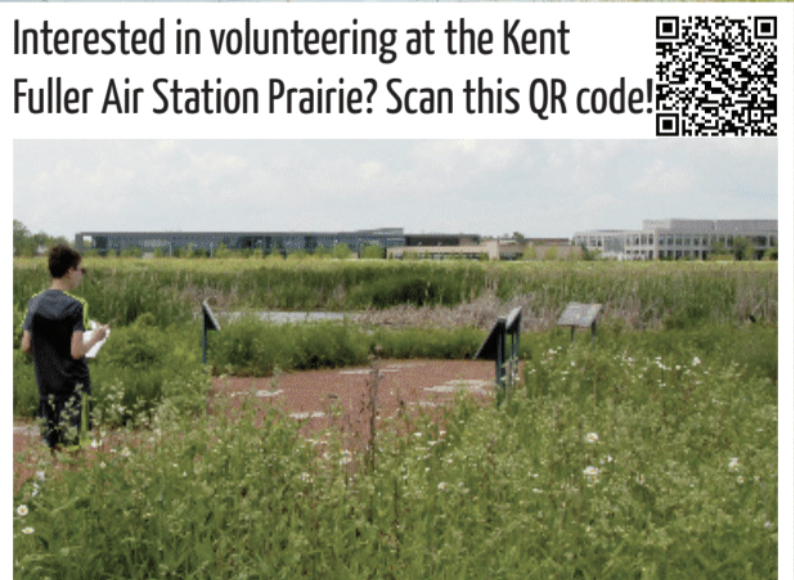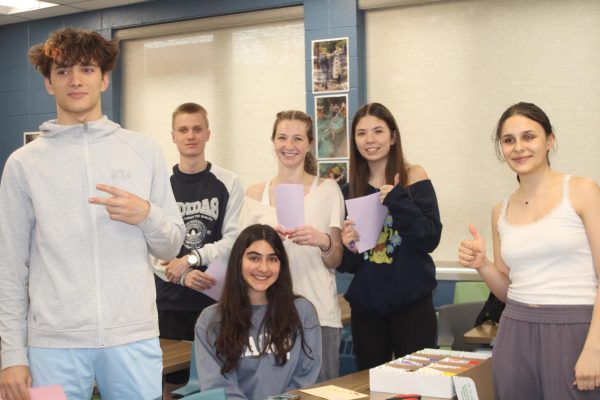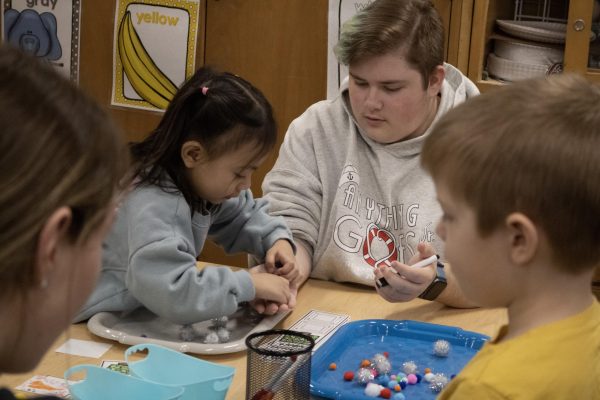PRAIRIE CONSERVATION:
Native midwest ecosystems under attack
April 21, 2023
Pavic said that classes study ecosystem restoration during a unit called “My Community Ecology”. She explained that students are presented with a problem: “How can we make South’s campus more sustainable?”
“Last year, the class came up with [one particular] solution: let’s take this monoculture [environment with] weeds and invasive species, and get more biodiversity there,” Pavic said.
Pavic’s class then reached out to a natural landscape architect, Doug DeWitt, who talked to them about what ecosystem would be beneficial for our area, a prairie, and also the impacts of human activity on biodiversity.
“Students took the information from DeWitt to create a presentation that was given to our administration to convince them to take on this project.” Pavic said.
Pavic explained that prairie restoration is a slow and multi-year process. The first stage is to remove the invasive species, then plant native species, followed by years of care and maintenance. Despite the effort required in the restoration process, Pavic believes prairies provide several ecosystem services, making it a worthwhile investment for Glenview.
“[One] ecosystem service [of prairies] is they promote biodiversity and bring native species and pollinators to the area,” Pavic said. “In Glenview] we have Wagner Farm, [which] requires [those services] to keep sustaining the species we want to see in the area, [specifically] native species.”
Over the past year, the focus of this project has been removing the invasive species, Pavic explained. She said once that is established, her AP Environmental Science class and Interact club will be adding in native species to the area through planting seeds and mature plants.
“Use of direct pulling of species, implementing chemicals to destroy roots, and controlled burns are a number of ways to control the invasive species population,” Pavic said.
Emmay Friedenson, Grove Restoration Technician for the Glenview Park District, explained that The Grove provides aid to all local land, specifically prairies. Friedenson said that because prairies absorb large amounts of precipitation, prevent flooding, foster biodiversity, and support natural pollinators, they are essential to the community. However, Friedenson found that humans continue to distress these lands without much thought in their importance in the environment.
“Illinois is known as The Prairie State; our whole land depends on the presence of praities,” Friedenson said. “Human habitation has left] an immensely negative impact on our prairies over the last 200 years, and we are still causing damage through demolition, industrial chemical use, and the proliferation of non-native species over native ones.”
Friedenson found that without much knowledge of prairies’ importance and the troubles caused by human habitation, many people lose first-hand experience with this unique ecosystem. They believe that the lack of awareness throughout Glenview limits the number of volunteers The Grove receives. Despite the small number of volunteers, The Grove continues to maintain a healthy biosphere, Friedenson said.
“Our volunteers are one of our greatest assets in restoration,” Friedenson said. “They perform a number of tasks, from removing invasive species to monitoring biodiversity over time.”
Grace Clark, an environmental studies major at the University of Oregon and 2022 South alum, believes that without the time or access to volunteer work, taking small steps at home is also an option. She explained that composting using yard waste bins, changing diets to become more plant-based, and using sustainable transportation are a few ways to help the environment.
“Changing your choices can make la positive impact on the environment because many choices people make regularly negatively affect the Earth,” Clark said
Senior Elizabeth Steer has taken both AP Biology and AP Environmental Science this year and commends both courses for doing a phenomenal job of educating students on the importance of the environment. Steer learned that despite prairies being a safe habitat for species to coexist in, humans overtook this land to practice agricultural cultivation. In her classes, she was able to learn how to grow plants more efficiently, to respect prairies, and the importance of keeping those lands sacred.
“We learned how to grow our plants through hydroponic systems,” Steer said. “This] teaches us how to grow food in ways that don’t take up as much natural land space?
Lifetime conservationist Kent Fuller spoke to the abundance of opportunities for Glenview citizens to get involved in prairie restoration, one being volunteering through the North Branch Restoration Project at the Glenview Kent Fuller Air Station Prairie.
“Volunteers] go [to the Air Station Prairie] and pick, gather, and sort seeds” Fuller said. “Those seeds can [then be used to [increase] the biodiversity of other prairies. Other prairies may have a plant species we need, [so through] the North Branch Restoration Project we’ve been able to restore 50 species that were missing from the Air Station [Prairie]?
In addition to volunteering, Fuller explained how caring for one’s own yard by removing Glenview’s invasive species; like buckthorn, is beneficial for Glenview’s ecosystems.
“If you get rid of the buckthorn, that’s one side of the coin,” Fuller said. “The other side is what are you going to grow there instead? If you’re willing to grow native plants, you can support native pollinators and native birds. You can restore biodiversity and provide their food and habitat.”
Fuller explained the history of prairies and their importance, elaborating that settlers chose the Glenview area because of its prairies that had rich, fertile soil.
“The prairie brought us soils that were tremendously productive and resistant to fires, which is why this area [was developed],” Fuller said.
Friedenson noted that besides volunteering specifically at The Grove, there are many ways people can help prai-res, whether it is in their own backyard or somewhere else. They explained that some environmentalists petition locally, in their state, or even nationally to pass legislation protecting land.
“No one person can save the whole world, but every person has the power to save the small slice of it that they live on,” Friedenson said.














